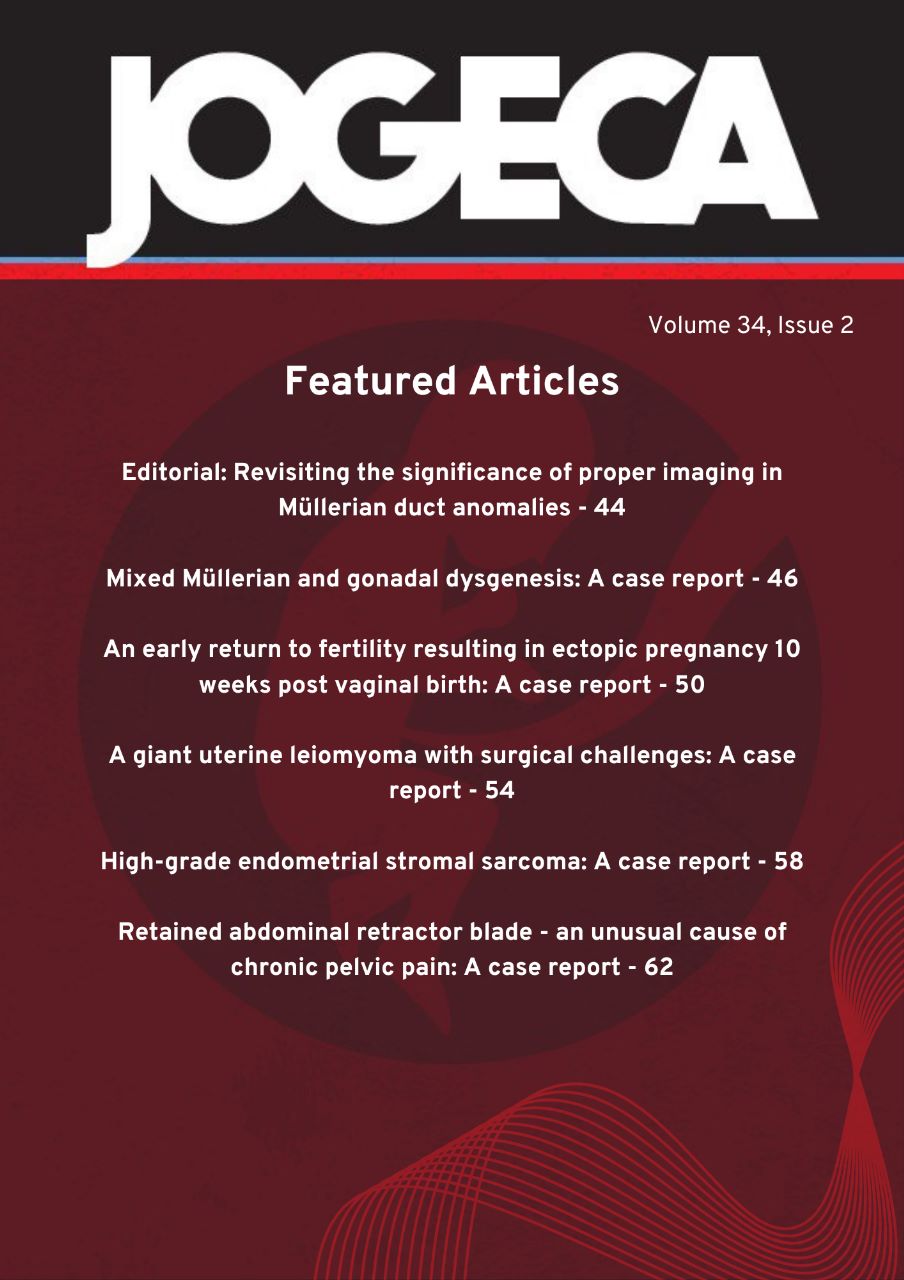Use of nonpneumatic anti-shock garment and first response care bundle to improve maternal survival following obstetric hemorrhage in Migori County, Kenya
DOI:
https://doi.org/10.59692/jogeca.v36i1.162Abstract
Background: Despite targeted efforts by the Ministry of Health and nongovernmental organizations, the maternal mortality ratio (MMR) was 673 in 100,000 live births in Migori County, Western Kenya. The first confidential investigation into maternal deaths was a detailed review of half of the maternal deaths reported across Kenya in 2014. Approximately 40% of maternal deaths were due to obstetric hemorrhage (OH), and 90% were attributed to substandard care.
Objectives: To evaluate the use of a nonpneumatic anti-shock garment (NASG) and first response bundle in maternal survival following postpartum hemorrhage.
Methods: An implementation team trained maternity care staff at 104 participating facilities (responsible for 85% of facility births for the county) to use the first-response bundle, NASG, and uterine balloon tamponade (UBT) combined with NASG for uterine atony. The study had two phases, beginning July 1, 2020, and ending September 30, 2021.
Results: 63,580 deliveries were reported, giving an OH rate of 1.32%. Of 838 women with OH, 51.8% showed signs of hypovolemic shock (n=434). NASG was applied per protocol to 56.5% (n=267) of women and preventively to 146 (36.1%) of the 404 women with OH. For most women with OH who did not receive NASG, the provider stated that it was not necessary. In three cases, NASG was not applied due to lack of a trained provider, and in four cases, NASG was not available at the facility. The use of the complete first-response bundle increased from 37.3% to 42.3% over time. For tranexamic acid (TXA), 40.8% of eligible women who received TXA had received the other three interventions. 86 were managed with both the UBT and NASG (22.5%).
Conclusion: This study demonstrated that the use of the NASG and PPH first-response bundle is feasible at tertiary and primary health facilities. The limitation to the use of a first-response PPH bundle is whether there is a local commitment to expand the availability of TXA.
Downloads
Published
How to Cite
Issue
Section
Categories
License
Copyright (c) 2024 The Authors.

This work is licensed under a Creative Commons Attribution 4.0 International License.




